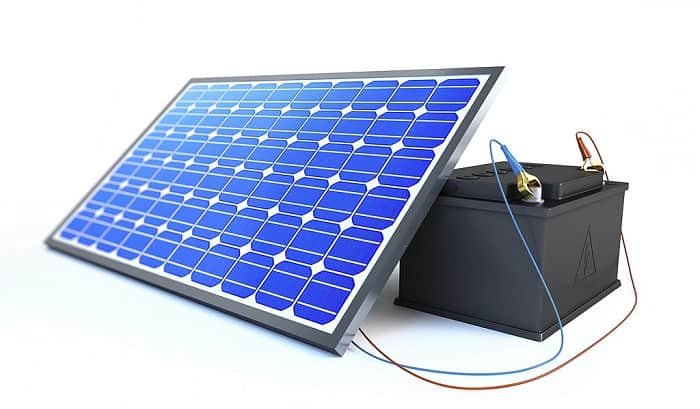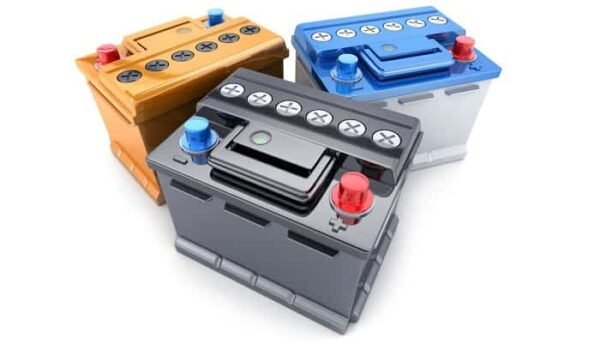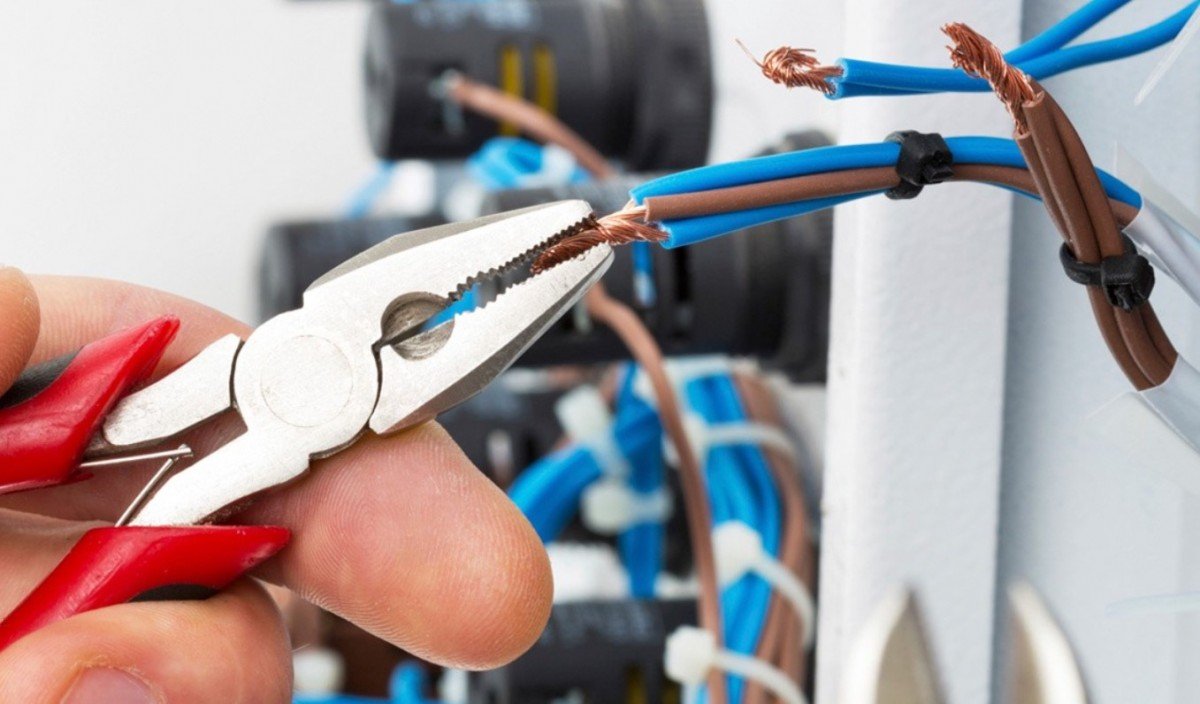
How to know if a solar battery is not working properly
Solar batteries are an important part of the solar system, for this reason I will explain how to know if a solar battery is not working properly.
To know if a battery is bad or defective, there are different ways to see it through the voltage of that battery, if it indicates a voltage lower than normal, it may indicate that there are communicating vessels inside the battery that are harming its operation and consequently to the other batteries connected with it. It is also important to know the characteristics and conditions of use of each one to avoid problems and have optimal operation in the installation or solar kit.
Related:
Whats is the discharge rate of a Battery?
How to connect a solar panel to a battery and inverter
How to know if a solar battery is not working properly
The charge levels of a battery serve as an important indicator about its correct operation or if it is a defective battery, for example, due to having communicating vessels that cause the voltage of that battery to be lower than normal. These charge levels will vary depending on the manufacturer, but it can be taken as a reference in a 12V battery system: 12.7V would be approximately the charged battery and 11.6V the discharged battery.
If a 12V battery offers a voltage of 10V or less, it means that it is bad or has communicating vessels that alter its correct operation. In a 24V battery system: 25.4V would be approximately the charged battery, while 23.2V would be the discharged battery. Thus, if one of the batteries of this 24V solar system offers a voltage of 22V, 21V or less, that battery will have a problem.
Finally, in a 48V solar system: 50.80V would be approximately the charged battery and 46.4V the discharged battery. And a voltage of 45V or less will indicate that one of the batteries in the solar kit is bad and does not work properly.
The fact that a battery offers an altered voltage is very important since it will completely alter the energy storage system, whether it is a single battery in the installation, or several batteries connected to each other.
In open batteries, which include the monoblock solar battery and the stationary battery (OPZS, TOPZS, UOPZS and ROPZS such as the ROPZS 600Ah stationary battery model ), it must be checked that the liquid level inside each vessel or compartment is within lines indicating maximum level and minimum level. A higher or lower level will affect its operation and voltage.
In sealed batteries such as the AGM battery or the Gel battery, as they are maintenance-free batteries since they recombine the gases they generate to convert them back into distilled water, there will be no need to worry about the liquid level, but if there may be a defective communicating vessel that causes its voltage to be incorrect, alters the energy storage system and once charged and indicating a normal full battery voltage, it discharges to a low voltage in a few seconds.
Moment in which the power inverter detects a low voltage, the red light will turn on and it will start to beep, it must be interpreted well that this does not mean that the inverter is malfunctioning, but that the battery charge level is very low or zero.
In the event that there may be the possibility of communicating vessels, the voltage of each battery must be measured separately by means of a tester or voltmeter, that is, without being connected to each other, to see which one is possibly affected. Once detected, it should be slowly charged using a battery charger (for example, the 20A battery chargerof
Ecosolar) until it indicates that it is full either through the electrical network at home or through an electric generator. Then consumption will be connected to see how it works. If it discharges again in a short time, we will be certain that it is a battery with communicating vessels and it must be replaced with a new one instead. The problem of interconnected cells is observed when batteries with a full charge level are completely discharged in less than 1 hour, and their voltage drops very quickly.
In these cases of battery malfunction, the voltage indicated by the regulator during the day should not be taken as a reference, since this value will be slightly distorted if you look at it when energy is being injected, either because at that time the solar panels connected are generating energy, or because there is another external source that is injecting electricity, such as an electric generator or generator set. For this reason, to know the exact charge value, it is recommended to see it once 2 hours have passed when there is no sun and the battery voltage has stabilized.
It is very important to remember that monoblock solar batteries are not suitable for use with motors or household appliances that have motors, such as refrigerators, freezers or washing machines, since this type of battery does not withstand the starting peak of the motors with which if this type of battery is used with motors, its useful life will be reduced very drastically, turning what seemed like a good investment, into a lousy investment for a useful life of 2 years at most instead of the initial 5-6 years of life . For these cases, it is necessary to use AGM batteries, Gel Batteries or stationary cell batteries, which do support the starting peaks of motorized devices without any problem and will have a much longer useful life.
It will also be important that the batteries are in a room with the most stable temperature possible, avoiding sudden rises or falls in temperature that will influence their performance and life over the years. In addition, in the case of having open batteries, with high temperatures in the room, the liquid will evaporate more quickly and maintenance will have to be more frequent.
As final indications: the battery terminals should be kept clean to prevent the formation of a white layer of sulfation that would harm contact and current flow. As well as checking the status of the wiring and connections every year to see if any have loosened. Nor should a battery ever be completely discharged, since when this happens, the energy coming from the plates will not be enough to start filling it, since it will need an energy base, which must fill a minimum of 25%. with a generator set, for example, so that the cycle of charge by the solar panels is carried out again.
For more information, contact the solar energy professionals at Damia Solar on the phone 973 972 533 or by email at [email protected] and we will assist you in a friendly and professional manner to provide a solution to your electricity needs.
How long do solar batteries last?
If you have a solar power system with a battery bank, you may be interested in knowing How long do solar batteries last? in this article we will tell you about it.
Between significantly rising electricity costs, wracking natural calamities, and fluctuating grid outages, it’s no wonder more homeowners are turning to solar to meet their energy needs. A solar battery system allows you to absorb more solar energy and store it until you need power to light your place.
Regardless, it’s helpful to ask yourself a few questions before investing in one. One of these questions is, how long do solar batteries last? It is essential to learn more about the type of battery storage that would be most useful to you.
Most of all, getting great results with solar starts with being a well-informed shopper. Let us explore more about the lifespan of solar batteries to help you make an informed final purchase decision.
The service life of solar batteries
Of course, investing in reliable solar batteries will significantly help you save the electricity your solar panels generate during the day. Not to mention, determining the top batteries for your solar will certainly help you make the right decision. Whether you need a solar system for your tiny home, cabin, RV, or any other setup where you rely primarily on stored energy, you need to be properly informed.
The universal range for the useful life of a solar battery is between five and fifteen years. This means that if you install a solar battery now, you are more likely to replace it at least once to accommodate the 25-30 year lifespan of your PV system.
However, just as the lifespan of solar panels has expanded dramatically over the last decade, it is anticipated that solar batteries will follow suit as the market for energy storage solutions expands.
Basically, proper maintenance can also have a noticeable impact on the lifespan of your solar batteries. Solar batteries are tremendously affected by temperature, so protecting your battery from scorching or freezing temperatures can significantly help extend its life.
A photovoltaic battery will need more voltage to acquire an optimal charge when it drops below 30 degrees Fahrenheit. Meanwhile, when that same battery goes above 90 degrees Fahrenheit, it will overheat and demand a drop in charge.
To avoid this problem, many reputable battery manufacturers now produce solar batteries that come with temperature moderation as an essential feature. However, if the solar battery you buy does not have this feature, you will have to look for other solutions, such as earth-protected cases.
Remember that quality maintenance efforts can greatly affect the life expectancy of the solar battery.
What are the other factors that also affect the life of solar batteries?

Battery Composition
The type of battery you choose could make a noticeable difference; this is especially true when storing solar energy. Batteries based on contemporary lithium-ion technologies require a more substantial initial investment; however, they are not prone to rapid degradation and may warrant more extended service.
On the other hand, lead-acid batteries have been well-known and less expensive options for decades; however, they generally have a shorter shelf life of only 3-5 years.
Temperature
A battery acquires a higher chemical activity when it is stored at high temperatures. This makes solar-powered batteries less powerful in colder climates. However, the cyclic life of a battery decreases with increasing temperature.
The cyclic life of the battery
You can quickly detect the useful life of a solar battery through the number of cycles of use it has or its cyclic life. For example, you can expect a flooded lead-acid battery to produce between 300 and 700 cycles.
On the other hand, lithium batteries are capable of providing 2000 cycles. A GEL cell battery is powerful enough to generate 500 to 5000 cycles.
Depth of Discharge (also known as DoD)
This refers to the range at which a solar battery can be used compared to its full capacity. Batteries drop when charging or discharging. This, as a result, reduces your ability to retain more energy.
For example, a battery rated at 100 kilowatt-hours at 60% depth of discharge would have an exceptional charge of 40 kilowatt-hours.
round trip efficiency
It refers to the difference between the amount of energy used to charge it and the energy available. Of course, a solar battery with higher round trip efficiency means it is more cost effective. It is essential to look for a round trip efficiency of approximately 80%.
How to increase the life of solar battery
Regardless of how stellar the battery design is, if it is not properly maintained, it will not guarantee comprehensive services.
Here are some tips that could help extend the life of a solar battery:
- Improve equalization in solar batteries
Battery equalization refers to the process of overcharging solar powered batteries in a regulated approach. Thus, uneven loading leads to plate sulfation. Overcharging removes this through gassing.
Today, there are solar batteries that are designed with solar charge controllers . This feature is beneficial in restricting overload.
- Use suitable solar batteries
Batteries that are the right size for your application will ensure long battery life. These days, more consumers prefer lithium batteries because they have a long lifespan and are conducive and safer to the planet we live on.
Regardless, GEL cell batteries remain the most preferred option due to their proven long lifespan, typically lasting five to seven years when properly sized. Make sure the type of battery you use has a nominal voltage of 25.6 volts or 12.8 volts, as these options last longer.
- Regulate the number of batteries
Consider reducing the number of batteries used in the bank. Using multiple batteries can strengthen the connection and resistance, which is more likely to result in uneven charging. Therefore, it is crucial to regulate the number of batteries used in your bank down to four or less.
- Make sure your solar battery does not discharge for a long period
Your solar batteries are more prone to damage if they remain in storage for a long period of time. You must constantly turn on your charging source to allow the battery to constantly charge to facilitate uninterrupted sunlight.
What to look for when choosing a battery that’s right for you

There’s no denying that energy storage systems offer countless benefits, from ensuring power for emergencies to saving more money in the long run. However, not all homeowners are aware of the technical complexities that solar batteries bring.
So, to help you avoid scratching your head every time you come across unfamiliar terminologies, we have listed some of the factors that you should focus on and look for in a solar battery.
How to decide which solar battery specifications are the most important for your needs?
In all honesty, you have several potential comparison points and decision criteria to make when evaluating your energy storage options.
Here are some of them:
- Higher Usable Capacity – You should look for a battery that comes with a higher usable capacity if you want to run your home on your battery for an extended period of time.
- High Power Rating – Look for a battery that has a high power rating. This feature is vital if you prefer to power more of your home or workplace at once.
- High Instantaneous Power Rating – This is valuable if you want to make sure you can power more energy-hungry appliances. For example, you need to power a sump pump; You will need a battery that has high instantaneous power.
- LFP Batteries – These batteries are designed with the highest safety rating and longest life. In short, if security is your primary concern, these alternatives will give you more peace of mind.
Also, it can cycle lithium iron phosphate batteries for the longest amount of time.
- Higher Round Trip Efficiency: Batteries with higher round trip efficiency will allow you to get the most out of every kilowatt-hour of electricity you store in them.
- Lithium-Ion Nickel Manganese Cobalt (NMC) Batteries – These types of batteries are for space-constrained applications and if you want to ensure you get the most storage in the least amount of space.
Conclution
It is important to note that not all solar batteries are created equal. Specific solar battery systems incorporate state-of-the-art design and technologically advanced features to prevent the degradation process. On average, some solar batteries typically last a few years; however, a high-quality system is capable of meeting your storage requirements for 5 to 15 years.
The lifespan of solar panel batteries depends on many different complex factors. Therefore, understanding how these factors affect the long-term performance of a solar battery can help you decide on the most suitable alternative for your application. Hopefully, the information shared in this post can help you better understand the solar battery options that are right for you.





